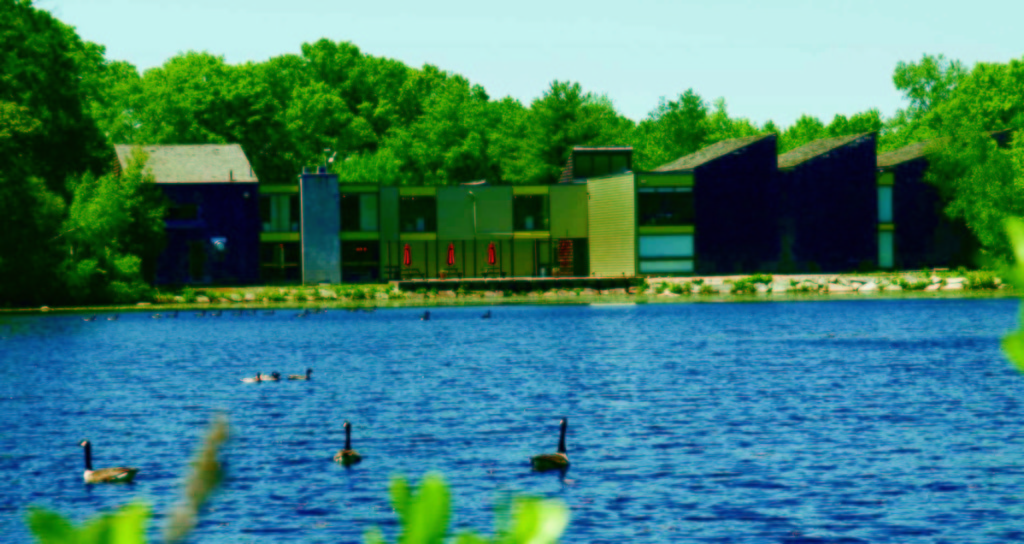-715x1024.jpg)
The name Jonathan Fairbanks is well-known to most students and collectors of American decorative arts. Now 85 years old, his career of more than 60 years has included curatorial stints at Winterthur and The Museum of Fine Arts, Boston, where he established the department of American decorative arts and sculpture and where he served as curator for more than 30 years. In 2017, he retired after five years as the director of the Fuller Craft Museum in Brockton, Mass., where he is now senior research associate and director emeritus. A partial listing of his publications indicates the scope of his expertise and interests: Paul Revere’s Boston and New England Begins: The Seventeenth Century, both landmark studies of early American culture, and The Art That is Life, which explores the Arts and Crafts period, to Glass Today by American Studio Artists. That list just begins to reflect the man: he is an accomplished painter, he served as a navigator in World War II, and he is an 11th-generation descendant of the Fairbanks family, which settled in Dedham, Mass., in 1633. The family home, which is the oldest frame house in America, still stands and has been open to the public for more than 100 years. His father, Avard Fairbanks, was a prominent sculptor, with three works in the nation’s capital and others in the state capitals of Utah and Wyoming; previous generations also included artists.
Tell us about the Fuller Craft Museum
The Fuller Craft Museum is one of only seven museums in the country to collect and display contemporary crafts – wood, fiber, ceramics, glass and metals – and the only one in New England. It was founded as a fine arts museum in 1969 with a donation by Myron Fuller, so next year will celebrate its 50th anniversary. In 2004, the board of directors unanimously decided to switch the emphasis to contemporary crafts. I became its third director; my emphasis was on the relationship of craft to art. Sometimes museums display artifacts as works of art but don’t connect the artifact to the craftsman who made it. It’s important that we do that. The collection now includes more than 700 objects from nearly 500 emerging, mid-career, and established artists and creators.
What can you tell us about the building?
We have a 23-acre piece of land in a rustic setting with a large pond. The building was designed to fit the space by architect Timothy Anderson of Boston and inspired by a modernist masterpiece, the Louisiana Museum of Modern Art. The result is three interconnected pavilions, incorporating and taking advantage of the pond and other outdoor features and allowing us space for outdoor sculptures. Construction began in 1967, and the museum opened a few years later.
 What are your future plans with the museum?
What are your future plans with the museum?
I’ll be continuing to work with the museum, especially to increase membership and visitation. We have a talented and creative staff and a well-thought-out five-year plan. We have six exhibitions running now that reflect the variety of our collections, and we will continue with several new exhibitions each year. In addition to celebrating the 50th anniversary of the museum in 2019, we are also involved with celebrations, in 2020, of the 400th anniversary of the Mayflower voyage from Plymouth, England. Denise Lebica is the museum’s new director. She was deputy director and after I retired in 2017, the interim director. She has more than 30 years in the museum field. She’s a watercolor painter and a textile artisan, so she has a good feel for the museum’s mission. One of her priorities was the completion of a major digitization project that will allow web viewers full access to our collections; we have a full-time person, Madeleine Larson, who is working on that. The museum’s vision statement explains: ” Our goal is to expand awareness, insight, and accessibility for our growing audiences.” The museum puts on numerous workshops for aspiring crafts people of all ages.
Will you continue painting?
Yes, I’m really looking forward to increasing my time painting, and I’m expecting new adventures in that field. There may be additional research projects, but I’d hope they’re not as time consuming as previous ones. I continue with trust work – distributing collections and assets as donors would wish them to be distributed. This takes time to do well, as I’ve discovered. Yet it gives great satisfaction to see how much good can be done by donating the right works of art or money to the needy and right organizations. My future (as long as it lasts) remains an unknown discovery adventure!
-Rick Russack




